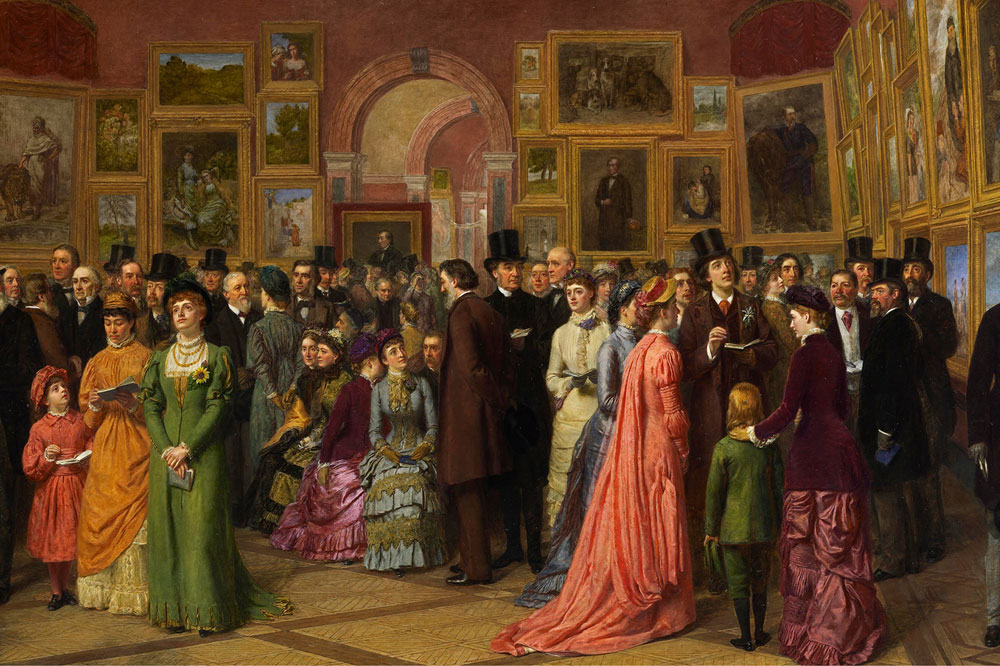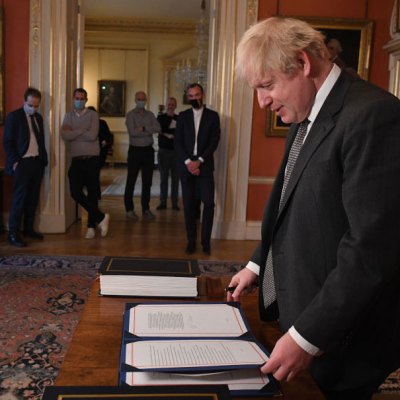From the May 2021 issue of Apollo. Preview and subscribe here.
With fairs cancelled and galleries shuttered over the past year, London’s art market has been a shadow of its former self. Will the city see high footfall again, or are virtual viewings and diminished sales here to stay? Below art dealers Stephen Ongpin and Thomas Dane and François Chantala reflect on what’s to come.
Stephen Ongpin
The art market in London is a many-splendoured thing. I know this from my own experience of it, both as a gallerist specialising in Old Master, 19th-century and modern drawings for more than 30 years, and as chairman of London Art Week (LAW), a dealer-led event which features many of the capital’s leading galleries and auction houses, and highlights the very best of what the city can offer in the world of pre-contemporary art. Although it may come as a surprise to the national press, who seem to regard the ‘art market’ as being solely about contemporary art, London supports a thriving ecosystem of galleries encompassing some 5,000 years of art history.
The effects of the pandemic over the past year have had a far-reaching impact on my own gallery, forcing us to adapt and respond creatively in the face of an unpredictable and evolving situation. Apart from the fact that our doors were closed for several months, the cancellation of a number of art fairs also led to an inevitable reduction in the number of sales that would be expected in any normal year. Nevertheless, the gallery has weathered the crisis with a programme of online exhibitions and digital catalogues, and an increasing level of engagement with clients, particularly through our recently upgraded website. We even managed to hold our annual January exhibition in New York this year, attracting a smaller but much more determined audience of collectors, many of whom expressed the sheer pleasure of being able to look at art in person again. And throughout the past year I have felt the thrill of every sale made against the odds!
At LAW, the decision was made in April of last year to switch to a wholly digital format, and in the space of just 10 weeks a new and visually enticing online platform, rechristened LAW Digital, was created, almost from the ground up. More than 50 galleries – mostly London-based but also from France, Germany, Italy and the United States – took part, and I am immensely proud that LAW was able to survive because it had the ability to change to suit the times. For 2021, LAW will return to hosting several physical gallery exhibitions in London, while continuing to maintain a broader online component, and London Art Week and LAW Digital will run alongside and complement each other; a synchronicity that may continue into the future.
I believe that the London art market – at least in the many specialised fields of pre-contemporary art for which the city remains a centre of knowledge and connoisseurship – will be able to recover quickly from the tribulations of the past year. This is in no small part due to the genuine passion among connoisseurs, curators and collectors that drives the market in many disparate fields. To take my own discipline of drawings, for example, the vast majority of my clients are long-standing collectors who have been active participants in the market for many years. Such collectors, as in many other specialist areas of pre-contemporary art, are driven by a particular enthusiasm for the works and a concomitant desire to explore what is available on the market, rather than by, say, an interest in investment or a desire for social status. In general, it would seem that the pandemic has done relatively little to prevent the committed collector from continuing to seek out and acquire works of art.
While art fairs will continue to play an important role (although some of the lesser ones may fall by the wayside), it must be acknowledged that visiting a fair, with its attendant crowds, is something that may take some getting used to again. As such, some collectors may come to prefer the relative calm of a bespoke visit to a gallery over the less intimate environment of a TEFAF or a Masterpiece. It is also true that a digital or online component will become a much more important part of any art fair’s programme, as it will be for any gallery like mine. The success of recent online auctions in specialist areas like Old Master drawings points to a willingness among collectors in many fields to continue to engage with the market. While most clients are now used to looking at works online, I think everyone can agree that there really is no substitute for standing in front of an actual work of art, and London will always be one of the very best places to do just that.
Stephen Ongpin is a London-based dealer in Old Master, 19th-century and modern drawings.
Thomas Dane and François Chantala
A few months into Brexit, and with the UK having been battered by the Covid storm for more than a year, London’s long-established identity as the world’s second-largest art market is being questioned; its resilience threatened. London-bashing is suddenly cool.
Politicians and the press can be quick to invoke and emulate a jingoistic and antiquated Blitz spirit. Likewise, we can be too ready to reprioritise the ‘local’, and to believe that art can be exhibited and sold online just as well as in the flesh. But looking back at the last year, we feel that London’s art market will, as it always has done, bounce back.
London was unphased when, almost 10 years ago, a number of international galleries stormed the city, attracted by its enduring cosmopolitanism and its position as the English-speaking capital of Europe; it will, conversely, weather any exodus that might occur. Why? Because it has the richest tapestry of galleries, dealerships and arts organisations in the world. Second to none. The London art world is complex, historic, forward-thinking, balanced and collegiate.
When the storm hit last year, the majority of dealers in the city did not look at laying off their staff or relocating to sunnier shores, but instead fought to protect and salvage what they could. Even at a time when some felt the need to be more competitive, and when the pitfalls and excesses of our industry had been glaringly exposed, London came together like never before. From Sadie Coles, who, with a few other colleagues, created a gallery forum in which information and ideas could be exchanged, to Christopher Battiscombe at the Society of London Art Dealers (SLAD), who was instrumental in negotiating reliefs and dispensing advice, London professionals looked to each other and talked to one another. Meetings of the Visual Arts London Strategy Group (VALS), chaired by Ralph Rugoff and assembling figureheads from the museum world, gained an urgency, and have continued on a weekly basis since.
The question is not so much whether the London art market (and by extension, the City of London, and the UK as a whole) will bounce back, but of course how it will bounce back. If London were to become a fiscal paradise, whipped up by a government of ideologues and privateers, who might finally understand the potential of the arts solely through the prism of their economic impact (which is immense), then we would lose our singularity and a little bit of our soul. This uniquely creative and collegiate spirit means that an organisation such as the Gallery Climate Coalition (GCC), which was created in the past year and aims to facilitate a greener and more sustainable commercial art world, could really only have been a London invention; especially at a time of such hardship. The breadth of people involved, from gallerists, writers and art-fair directors to software and shipping professionals, reminds us that there is more to the arts than greed and megalomania.
London is, of course, a capitalist and entrepreneurial city, but it also possesses remarkable civic responsibility. It stands somehow proud between the all-too-private North American model and the all-too dirigiste Continental model. The players and professionals of the London art world, down to its vital core – the artists – will always give back to it. A real sense of Community (and the word can indeed be overblown or twisted) exists in London: as a purpose, a business acumen, a set of ethics, and ultimately a social fabric. And this is why the playwrights, visual artists and restaurateurs of this world will always want to make it here rather than in a Monte Carlo or a Singapore. Furthermore, the London professionals will have understood and learnt from the fragility and fickleness of its economy, and will be eager to reemphasise its originality and sustainability (in all senses of the word).
Frieze, Christie’s, Sotheby’s, Tate, SLAD, VALS, GCC, et al. are not solely a collection of companies, collectives, brands and acronyms, but a resourceful and creative territory from which to exchange, lobby, rally, bounce and grow – proper London (re)inventions. Don’t give up on London.
Thomas Dane and François Chantala are partners at Thomas Dane Gallery.
From the May 2021 issue of Apollo. Preview and subscribe here.



